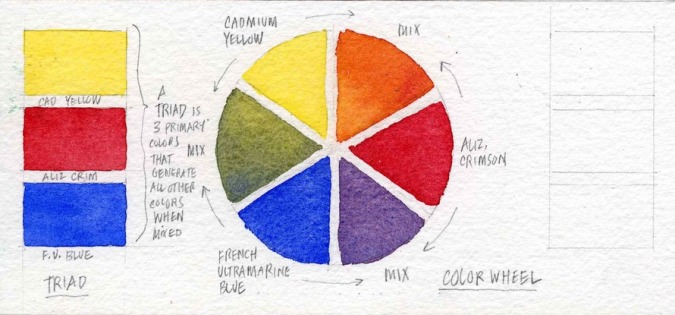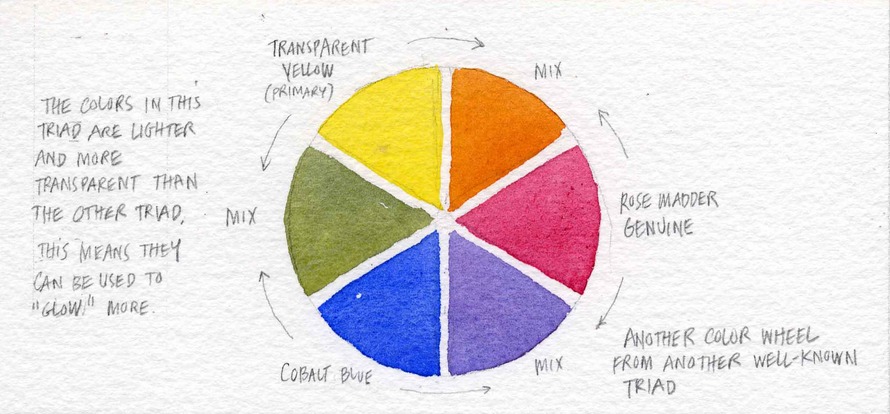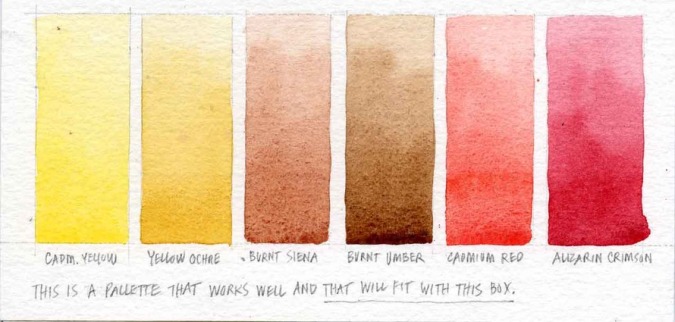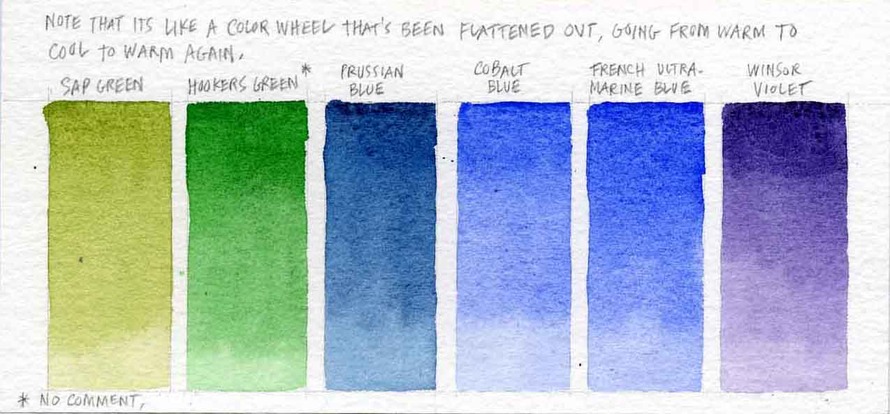(PROLOGUE: Attention: Visitors from Pinterest. Thanks so much for clicking through! Please do me a favor and click here —-> YouTube <—- to subscribe to my painting and drawing tutorial channel on Youtube. It’s full of tips for your drawing and painting skills. Your support means the world to me. Best, James Akers)
COLOR THEORY
Color is simply…well…actually there have been a ton of thicker books written about color. For our purposes, color is what you are trying to copy from life onto an empty, terrifying little piece of expensive paper, with no guarantee that you’ll ever show the result to anyone, using only some *color juice® in a tube, a little brush and some water.
(*the academic term color juice is a patented and trademarked term invented by Clark Smith, the actual best architectural renderer in the world. Please click here to immediately go see his work! Then click to go see the scholarly article "My Friend Clark Is Cool" here.)
ONE WORD...COLOR WHEEL

Click to enlarge
OK, that's two words, but if I had used one word it would be this: triad. Believe it or not, you are going to use the theory of the color wheel and the color triad to make your little paintings. The color wheel is easy: It consists of three primary colors (yellow, red and blue) spaced equally around a “wheel.” Next come the three secondary colors, located between the primary colors, and created by mixing the two primary colors on either side of them. In other words, red and blue make violet; red and yellow make orange; and yellow and blue make green.

Click to enlarge
Never mind for now that you can’t get every green or every orange or every violet you’d like to get from mixing primaries. The reason we call the primaries chosen in this book a “triad” is because they have become known over the years to artists as producing the nearest misses in trying to acheive mixes of all the colors. They are particularly good at getting there, especially with the help of the few secondary colors we threw in to our shopping list in the previous chapter.
GETTING STARTED
Basically you are about to play with your paints before ever trying to paint that incredibly picturesque barn down the road. Besides, so many bad paintings have been done of that barn that it will probably be happy to wait for you. What I would like you to do, and what you are going to love doing, is squirt a little paint in each holder of your palette as indicated in appendix 2, fill up your old container with water, rip the shrink wrap off your watercolor pad, and paint about 10 juicy 3” or 4” wide squares of each color in your palette onto your paper. Do one with a little water and mostly paint, then do the opposite, then try more and less water, then try adding water to the paper and dropping paint in. In other words, get acquainted with the color and feel and transparency and opacity and other surprising characteristics of each color. You are going to waste a lot of paper, but there is no other way to learn, and your brain will be soaking up information you are not even aware of. But most importantly, you will look like you know what you are doing and nobody will be able to criticize your squares. They just are what they are.


Click to enlargeClick to enlarge
Appendix: Here are some keywords which will help readers index this article:
architectural rendering
watercolor techniques
architectural renderings
architectural rendering techniques
watercolor rendering techniques
pen and ink techniques
watercolor rendering
watercolor techniques
architectural sketches
watercolor rendering techniques
watercolor techniques
architectural watercolor rendering techniques
pen techniques
different watercolor techniques in rendering
architectural sketching
pen and ink
sketching techniques
architectural rendering in watercolor
rendering watercolor
(Author James Akers is a registered architect and illustrator with over 25 years experience. He provides both in-house and studio-based sketching, rendering, and what one might call "design stenography" services to many of NYC's and Boston’s leading architects.)